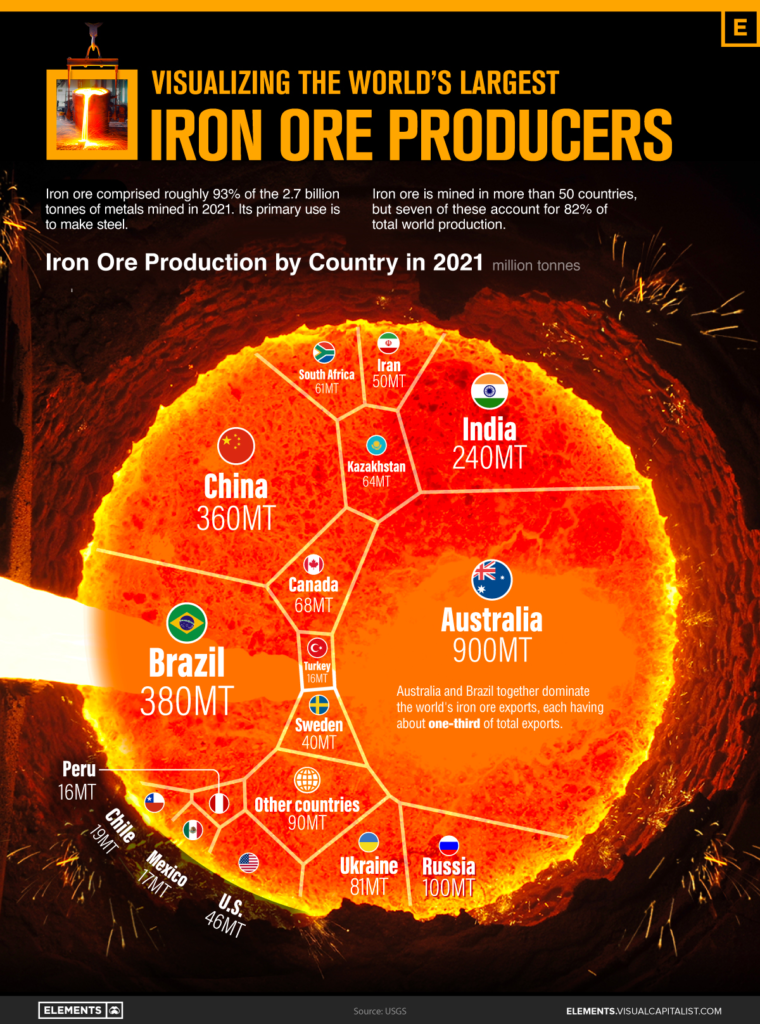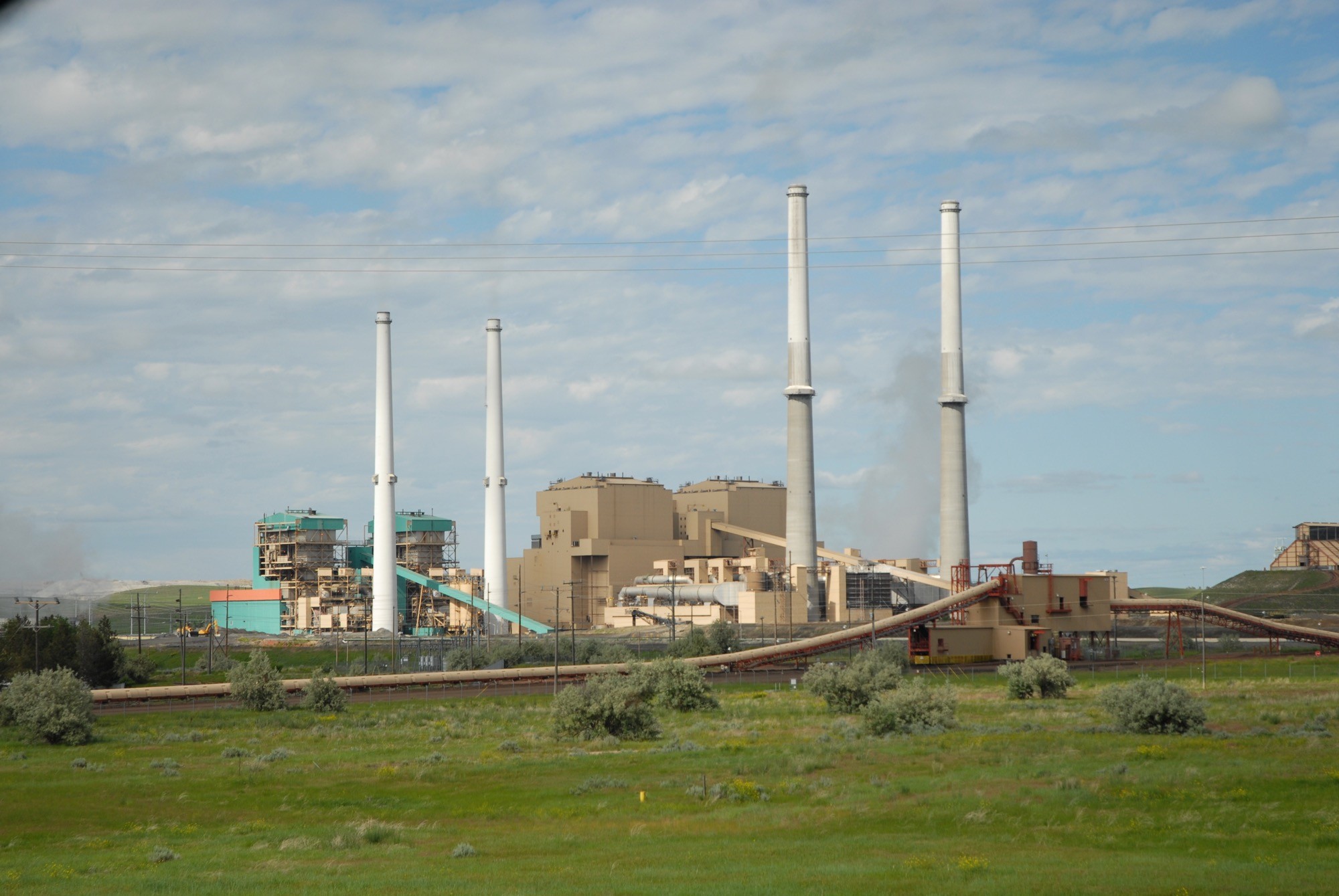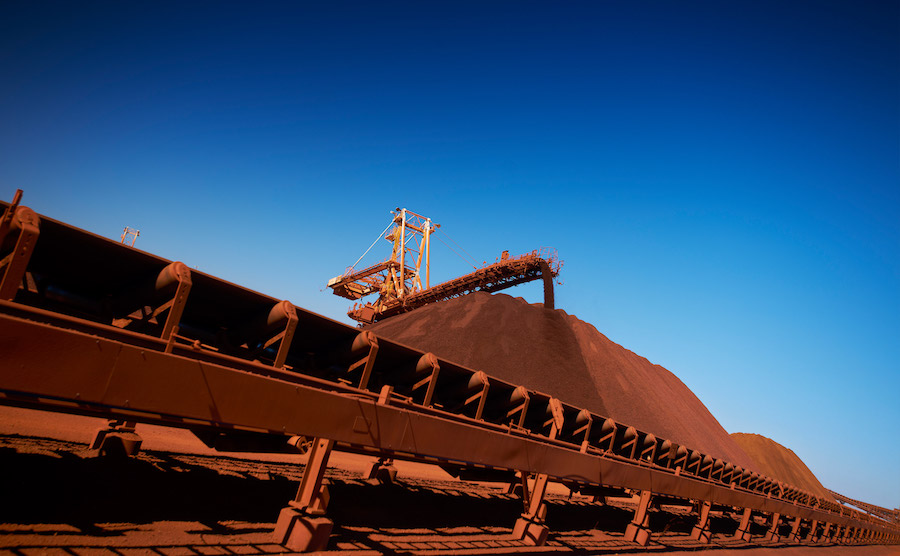Visualizing the world’s largest iron ore producers

Visualizing the world’s largest iron ore producers
Iron ore comprised roughly 93% of the 2.7 billion tonnes of metals mined in 2021.
It is used primarily (98%) to make steel, with the remaining 2% becoming magnets, auto parts, and catalysts.
Using data from the U.S. Geological Survey, the above infographic lists the world’s largest iron ore producers in 2021.
Pilbara and Carajás iron ore
Iron is the fourth most abundant element on the planet after oxygen, silicon, and aluminum, constituting about 5% of the Earth’s crust.
Australia produced 35% of the iron ore mined last year. Almost 90% of identified iron ore resources in the country occur in Western Australia, especially in the Pilbara region.
The large and dry region is known for its Aboriginal peoples and also for its red earth as a result of a chemical reaction of iron exposed to air and water. The three major Pilbara iron ore producers are also among the top mining companies in the world: BHP Group, Rio Tinto Ltd, and Fortescue Metals.

After Australia, Brazil is the second biggest producer, with iron ore accounting for 80% of the country’s mining exports.
Brazil’s biggest public company, Vale, is the world’s largest producer of iron ore and nickel. The company runs the Carajás mine, the largest iron ore mine in the world. Located in the state of Pará, in the north of the country, the mine is operated as an open-pit mine and is estimated to contain roughly 7.2 billion metric tons of iron ore.
Together, Australia and Brazil dominate the world’s iron ore exports, each having about one-third of total exports.
China is the largest consumer of iron ore, used to feed its steel industry.
Despite being the third largest producer, China still imports around 80% of the iron ore it uses each year. The country brought in 1.12 billion tonnes of the commodity last year.
Iron ore’s role in the green economy
Iron ore demand is expected to rise in the coming years as steel plays a crucial role in producing and distributing energy.
Steel is used extensively in agriculture, solar and wind power, and also in infrastructure for hydroelectric.
Furthermore, steel is used for the production of transformers, generators, and electric motors, along with ships, trucks, and trains.
(This article first appeared in the Visual Capitalist Elements)
More News
Dirtiest US coal-fired power plant applies for EPA exemption
The Colstrip plant, located in eastern Montana, has the highest emission rate of fine particulate matter out of any coal-burning plant in the nation.
April 02, 2025 | 02:55 pm
BHP considered separation of iron ore, coal: Reuters
BHP is currently the third-largest producer of iron ore and a major producer of met coal.
April 02, 2025 | 11:57 am
{{ commodity.name }}
{{ post.title }}
{{ post.excerpt }}
{{ post.date }}



Comments